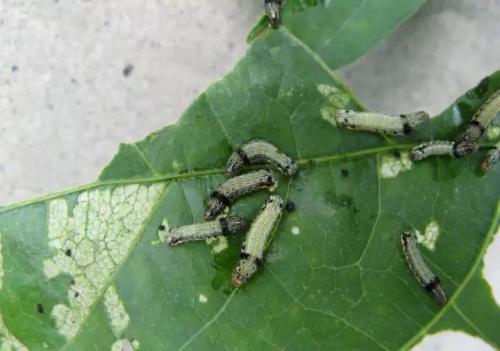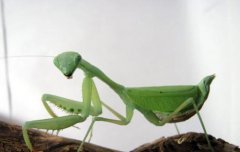What are the natural enemies of insects? What are the natural enemies of insects? lacewings.
What are the natural enemy insects, what characteristics do they have, and what do they mainly eat? using natural enemy insects to control pests is a special control method, which can reduce environmental pollution and maintain ecological balance. Remarkable results have been achieved in the propagation and utilization of natural enemy insects in China. Let's take a look at the following introduction.

Natural enemy insects are a kind of insects that parasitize or prey on other insects. They control the development and spread of pests in farmland, forest and pasture for a long time.
Lacewings, belonging to venipterous insects, have eggs, larvae, pupae and adults. There are 105 species in the mainland and more than 200 species in Taiwan. Lacewings take aphids as the staple food, commonly known as aphid lions. When the larvae feed, they pierce the forceps into the prey and suck up the body fluid of the prey so as to kill the pests. There are many tumor processes on the back of the larvae, and the dried prey is placed on it as a camouflage, shaped like bird feces; some species of adults are green and have slender wings with many veins like lace, so the English name is "green lacewing".
Larvae can prey on the eggs and larvae of red spiders, aphids, whiteflies, shell insects and many kinds of pests, and they have the advantages of large food intake, rapid action and strong predation ability, so they are a kind of multi-functional commercial natural enemy insects. The larvae were fed with rice moth eggs indoors, and the adults were fed with an artificial diet made of yeast powder and honey. the female adults laid their eggs at the top of a secretory silk rod of about 0.5 cm. When used, lacewing eggs can be placed between rice fields, or larvae can be released directly on crops. Adults mainly feed on nectar and pollen. Mantis (mantid), belonging to the order Mantis, is a progressive metamorphosis of incomplete metamorphosis. More than 1500 species are known, including 17 species in Taiwan. Both larvae and adults are carnivorous and can catch butterfly moths, flies or locusts by feeding on active food. The head is triangular, there are three single eyes in the middle, and the compound eyes are well developed. it is the only insect whose head can turn backward 180 degrees. The basal nodes of the forechest and the first pair of feet are also special. The second and third sections of the forefeet are long spines, which are specially transformed into sickle-shaped capture feet. They often hold their feet high and other prey come to the door, as if they are praying, so they are also called prayer worms (praying mantid).
The broad-bellied praying mantis has a pair of obvious white spots on its wings and has brown individuals in addition to green. The mantis lays eggs in the oocysts formed by secretions, which are called "octopus" (sound floating away, for traditional Chinese medicine). More than a hundred eggs are arranged in four rows in the oocyst in the shape of "human", and they are often parasitized by parasitic bees in nature. Newly hatched worms will first take off the placenta, after 7-8 peeling to grow into an adult, the time is about 70-80 days, if there is not enough food, the time will be longer. The female is larger than the male, and the male will be slowly eaten from the head by the female during mating, but it still does not affect the mating effect, because the head nerve does not care about the sperm transport of the male. Mantis can be raised indoors, and housefly larvae are bought from fishing shops as food, while newly hatched mantis feed on drosophila melanogaster. The feeding box must create a three-dimensional space for it to rest, otherwise it will eat each other seriously, provide sufficient water and can live longer.
Tooth-eating flies, also known as tooth-eating gadflies, walk on the leaves to prey on aphids. They belong to the family syrphidae (Diptera). They are completely metamorphosed insects with larvae like maggots. They are often found near the places where aphids occur in tender buds. Those with green color have a white stripe on their back and brown transparent larvae. Many kinds of adults are like bees or wasps in color. Because they often fly among flowers, they are also called flower flies and feed on nectar.
The habitat and appearance of this kind of insect larvae vary greatly, and many species are beneficial insects, which specialize in feeding aphids and can be used as natural enemies to control aphids. Some gadfly larvae are parasitic in social insect nests, such as ants, termites or honeybee nests; there are also species that inhabit decaying plants or wood; and some species have long breathing tubes at the end of their abdomen and live in extremely polluted fresh water.
- Prev

The importance of biological control of plant diseases and the biological control methods of plant diseases
The application and prospect of biological control of crop diseases, is that what you do? Want to know? What are the application and development directions of biological control in plant diseases? So how do you do it? what's the method? Let's take a look at it. Biology
- Next

Mantis breeding: can little praying mantis be raised by itself? How to raise mantis?
Using fruit flies to raise small mantis, have you heard of this method of raising mantis? If you want to learn this method of ecological farming, let's take a look at it together. Predatory natural enemies are part of the predatory food chain, such as mantis catching cicadas and yellow finches.
Related
- A one-day flower show brings 130 million yuan in orders! Nanhai, this Phalaenopsis exhibition is amazing
- What do the flower language and meaning of Lutheran tree mean? Precautions for planting Lutheran tree
- Encounter Chaoshan Kongfu tea, not without this cup of Phoenix single clump
- The durian market in Vietnam and Thailand is flooded. The price of imported durian has plummeted by 30-40% in a month.
- Shanghai solved the problem of local vegetable supply by planting 80,000 mu of green leafy vegetables.
- Wageningen University has become the best agricultural university in the world for the seventh time in a row.
- The strongest export season of South African grapes is full of challenges, with exports to Russia falling sharply by 21%.
- Sri Lanka is on the verge of bankruptcy, "Tea for debt" Organic Agriculture Revolution aggravates the Food crisis?
- Turning waste into earthworm manure and worm manure into organic fertilizer-A new choice for auxiliary farming
- Organic rice growers shoulder the responsibility of nurturing agricultural talents! Yinchuan Sustainable Farm with Organic Life Camp

